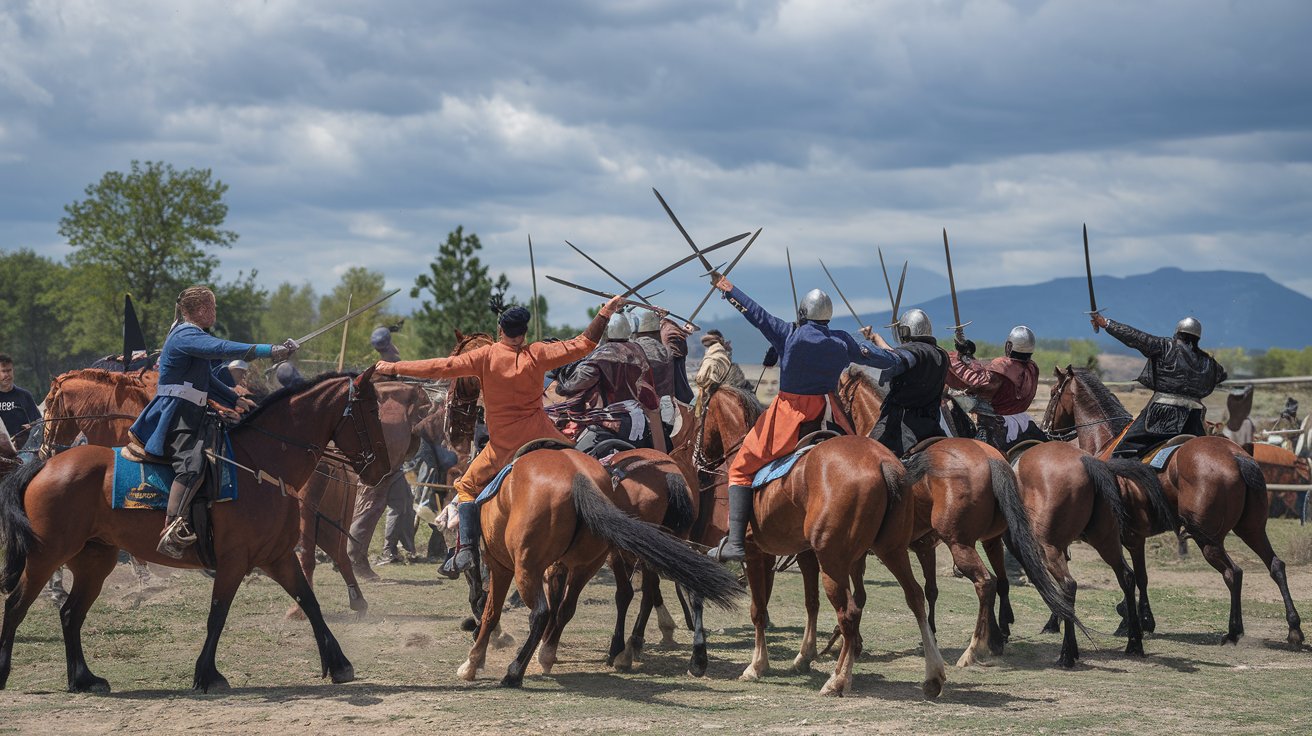
The Battle of Otlukbeli was a significant clash that took place on August 11, 1473, between the Ottoman Empire and the Aq Qoyunlu. This battle marked a pivotal moment in the history of the region, shaping the future of both empires. Sultan Mehmed II, also known as Mehmed the Conqueror, led the Ottoman forces, while Uzun Hasan commanded the Aq Qoyunlu troops. The confrontation occurred near the village of Otlukbeli in present-day Turkey. The Ottomans emerged victorious, solidifying their dominance and expanding their territory. This battle is remembered for its strategic maneuvers, intense combat, and lasting impact on the power dynamics of the time. Understanding the Battle of Otlukbeli provides insight into the military tactics, leadership, and historical significance of this crucial event.
Key Takeaways:
- The Battle of Otlukbeli in 1473 was a major clash between the Ottoman Empire and the Aq Qoyunlu, shaping the future of the Middle East and showcasing the importance of military innovation.
- The battle marked the rise of gunpowder weapons, the decline of traditional cavalry-based armies, and the eventual emergence of the Safavid Empire, leaving a lasting impact on Middle Eastern history and culture.
The Battle of Otlukbeli: An Overview
The Battle of Otlukbeli was a significant conflict that took place on August 11, 1473. It was fought between the Ottoman Empire and the Aq Qoyunlu, a powerful Turkmen tribal federation. This battle marked a turning point in the region's history, shaping the future of the Middle East.
- The battle occurred near the village of Otlukbeli in present-day Turkey.
- It was part of the larger Ottoman-Aq Qoyunlu wars.
- The Ottoman forces were led by Sultan Mehmed II, also known as Mehmed the Conqueror.
- The Aq Qoyunlu were commanded by Uzun Hasan, a prominent Turkmen ruler.
- The conflict was primarily over territorial control and dominance in the region.
Key Figures in the Battle
Understanding the main players in the Battle of Otlukbeli provides insight into the motivations and strategies employed.
- Sultan Mehmed II had previously conquered Constantinople in 1453.
- Uzun Hasan sought to expand his influence over Anatolia and Persia.
- Mehmed II's military reforms and innovations played a crucial role in the battle.
- Uzun Hasan's forces included a mix of Turkmen, Persian, and Kurdish warriors.
- Mehmed II utilized artillery and firearms, which were relatively new in warfare at the time.
The Course of the Battle
The battle itself was a dramatic and intense confrontation, with both sides employing various tactics and strategies.
- The battle began with a series of skirmishes and maneuvers.
- Mehmed II's forces used cannons to break the Aq Qoyunlu lines.
- Uzun Hasan's cavalry attempted several charges to disrupt the Ottoman artillery.
- The Ottomans employed Janissaries, elite infantry units, to hold strategic positions.
- The battle lasted for several hours, with heavy casualties on both sides.
Aftermath and Consequences
The outcome of the Battle of Otlukbeli had far-reaching implications for the region and the involved parties.
- The Ottomans emerged victorious, solidifying their control over Anatolia.
- Uzun Hasan's defeat weakened the Aq Qoyunlu's influence in the region.
- The victory allowed Mehmed II to focus on other conquests, including the Balkans.
- The battle demonstrated the effectiveness of gunpowder weapons in warfare.
- It marked the decline of traditional cavalry-based armies in favor of more modern military tactics.
Historical Significance
The Battle of Otlukbeli is remembered for its impact on the course of Middle Eastern history and military strategy.
- It showcased the strategic genius of Mehmed II.
- The battle is often cited as a turning point in the use of artillery in warfare.
- It highlighted the importance of technological advancements in military success.
- The defeat of Uzun Hasan led to internal strife within the Aq Qoyunlu federation.
- The battle paved the way for the eventual rise of the Safavid Empire in Persia.
Cultural and Legacy
The legacy of the Battle of Otlukbeli extends beyond military history, influencing culture and collective memory.
- The battle is commemorated in Turkish and Persian historical texts.
- It has been the subject of various works of art and literature.
- The site of the battle is a point of interest for historians and tourists.
- The tactics used in the battle are studied in military academies worldwide.
- The Battle of Otlukbeli remains a symbol of the shifting power dynamics in the Middle East during the 15th century.
Final Thoughts on the Battle of Otlukbeli
The Battle of Otlukbeli stands as a significant event in history, marking a pivotal moment between the Ottoman Empire and the Akkoyunlu Confederation. This clash not only showcased the military prowess of Mehmed the Conqueror but also highlighted the strategic importance of Eastern Anatolia. The battle's outcome solidified Ottoman dominance, shaping the region's future. Understanding these historical events helps us appreciate the complexities of past conflicts and their lasting impacts. Whether you're a history buff or just curious, the Battle of Otlukbeli offers a fascinating glimpse into the power struggles of the 15th century. Keep exploring history's rich tapestry, as each thread reveals more about our shared past.
Frequently Asked Questions
Was this page helpful?
Our commitment to delivering trustworthy and engaging content is at the heart of what we do. Each fact on our site is contributed by real users like you, bringing a wealth of diverse insights and information. To ensure the highest standards of accuracy and reliability, our dedicated editors meticulously review each submission. This process guarantees that the facts we share are not only fascinating but also credible. Trust in our commitment to quality and authenticity as you explore and learn with us.
